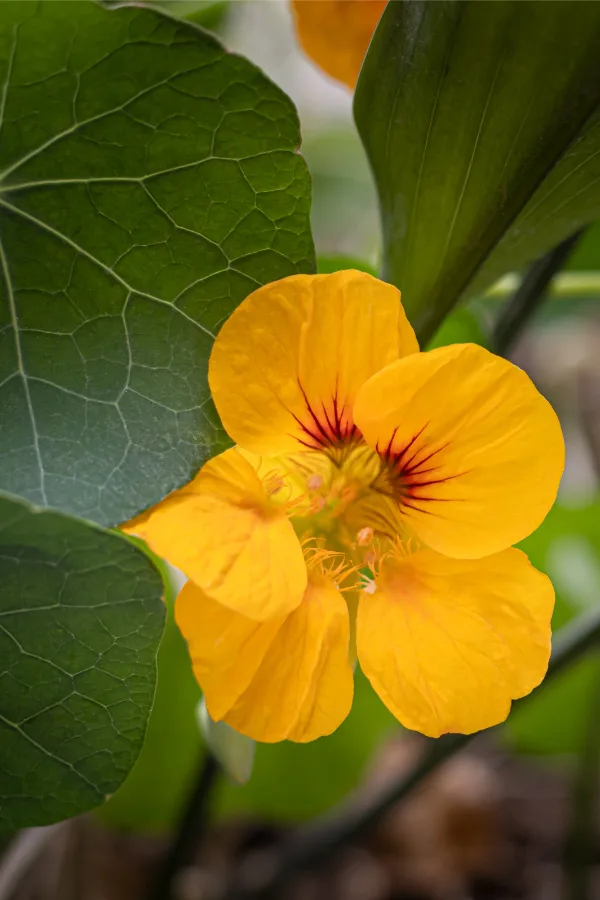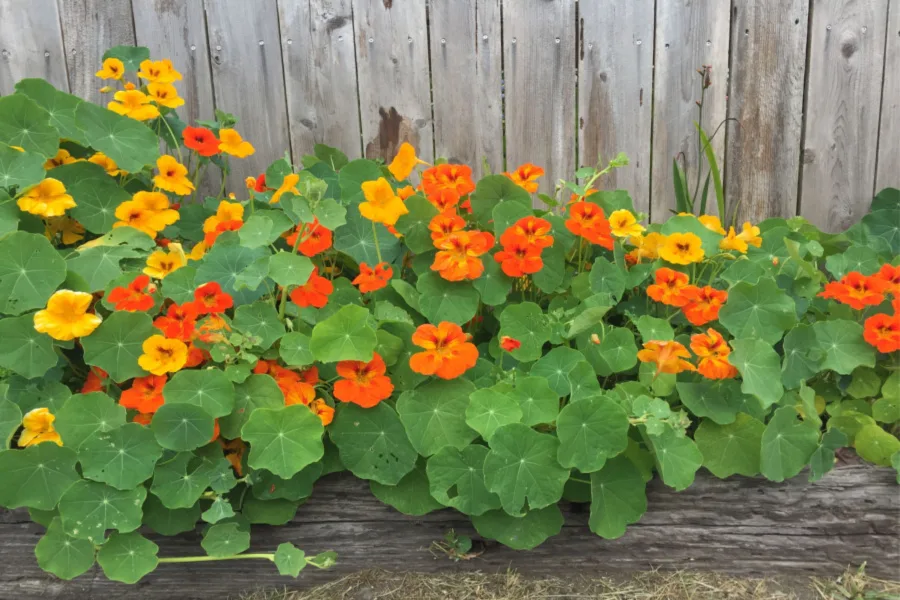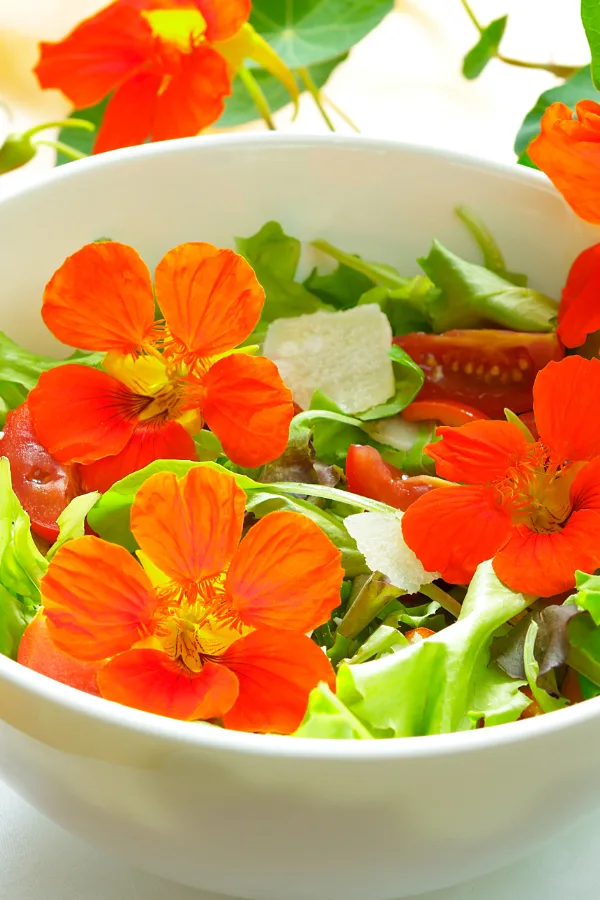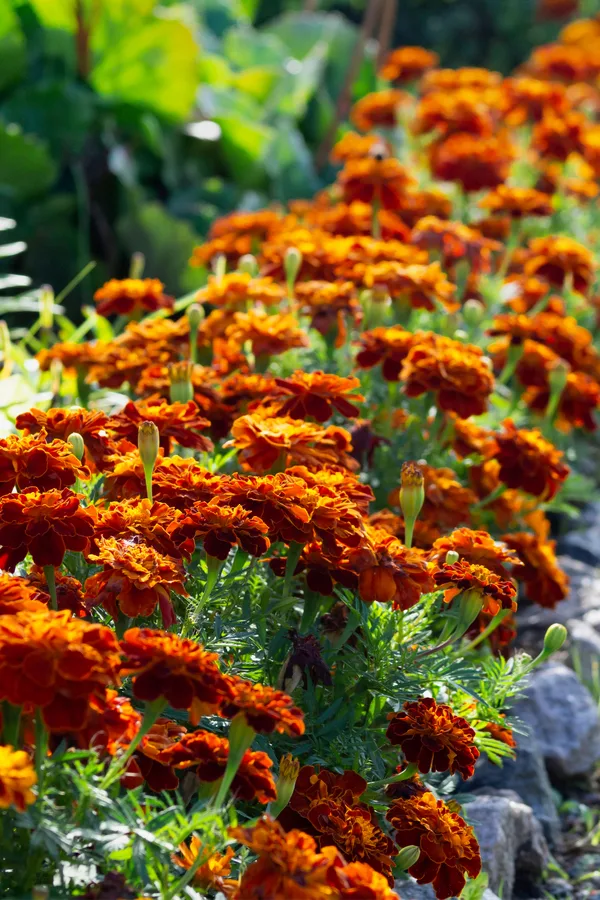When it comes to battling pests, pollinating plants, and adding intense color and beauty to your garden and flowerbeds – it’s hard to beat growing nasturtiums.
Nasturtiums are rewarding, versatile and delightful plants that can be added to any garden landscape and flower bed. They can grow in flowerbeds, gardens, raised beds, and even do well in pots and containers. And can they ever produce a spectacular cascade of color!
But the beautiful, radiating blooms that form on their soft foliage are just the tip of the iceberg when it comes to the benefits these gorgeous flowers can bring to you – and your vegetable garden and flowerbeds.

Nasturtiums are actually a powerhouse flower. They are the ultimate companion plant to a long list of vegetable and flower plants. In fact, it’s hard to believe that one single species of plant can bring so much good wherever it grows.
With that in mind, here is a look at the many reasons to consider adding nasturtiums to your grow list this year. We have also included a quick planting guide at the end of the article as well to help with growing these wonderful annuals with ease.
The Benefits of Growing Nasturtiums
Easy To Grow
Two of the best attributes of nasturtiums are that that they are easy to plant, and perform well nearly everywhere you grow them!
They are wonderful when planted as a ground cover in flowerbeds, as companion plants in the vegetable garden, or when allowed to cascade from a wall or window frame from a container planting.
Nasturtiums can be found in a wide range of growing patterns, from compact plants to lengthy climbing varieties. Their foliage can range from a variety of variegated patterns to pure solid-leaf. But it is the myriad of bright, colorful bloom choices that really bring this plant to life wherever it grows.
Nasturtiums are the perfect plant for anyone to grow – from seasoned veterans to someone entirely new to gardening. Planting from seed is quite easy, and with just a bit of water to see them through, they can be blooming in as little as four to five weeks.

Better yet, you don’t need to have rich, fertile soil to grow nasturtiums. In fact, they can thrive in some of the poorest quality soil around. And as an added benefit, they enrich the soil they grow in! As the plants die off and decompose, they recharge the soil with potassium, nitrogen, calcium and more.
Much like a cover crop, they leave the soil better, helping it to regain fertility and support the life of future plants that will grow in the same soil.
But as beautiful and easy to grow as they are, the real plus to growing nasturtiums are that they provide so many additional benefits to your landscape and the other plants that grow around them.
The Ultimate Companion Plant – The Amazing Benefits Of Growing Nasturtiums
The nasturtium foliage and blooms attract bees, hummingbirds, butterflies, and other pollinators to the garden. In fact, their colorful and bright flowers are among the best of the best for bringing pollinators calling. (See: How To Attract Birds, Bees & Butterflies – 5 Perennials Pollinators Love)
In addition to attracting beneficial insects, Nasturtium also works as an excellent trap crop. A trap crop is any crop that brings pests to it instead of attacking another nearby plant. Trap crops are great for planting near other plants that struggle with insect issues.
In the case of nasturtiums, you can plant them to protect nearby crops of lettuce, cabbage, strawberry, beans, peppers and tomato and pepper plants. The nasturtium plant will attract leafminers, leafhoppers, cabbage looper, aphids and slugs away – and help keep your other plants safe from attack.

As if all of that help wasn’t enough, the scent of nasturtiums repel a long list of insects. Nasturtiums emit a chemical marker, and the scent is highly offensive to whiteflies, tomato hornworms and squash bugs.
By simply planting them near tomatoes, peppers, cucumbers and other highly susceptible plants, the scent will help keep these attacking pests far away. That same chemical marker is also thought to keep mosquitoes away.
The Edible Flowering Annual – The Amazing Benefits Of Growing Nasturtiums
Not only are nasturtiums a wondrous flowering annual, they also happen to be a culinary herb. In fact, the whole nasturtium plant is useful – from flower to leaf. And they are not only edible, but also quite nutritious and delicious too.
The petals, flower buds, leaves, and seeds of nasturtium are edible. Young leaves can be eaten raw or cooked. The leaves have a spicy flavor, which can be added to homemade pesto, potato salad and more. You can also stuff larger leaves with egg salad, chicken, or tuna for a delicious snack.

Nasturtium leaves are rich in iron, vitamin C, and other essential minerals. The same goes for the flowers, as they contain vitamins C, B1, B2, and B3. They also contain calcium, phosphorus, iron, and manganese too. All the more reason to use them everywhere you can!
Good for The Skin – The Amazing Benefits Of Growing Nasturtiums
Nasturtium plants can also be quite good for your skin. The leaves of nasturtium have antibacterial properties that are effective against all kinds of bacteria. It can also be a natural remedy for acne.
Simply make a paste with the leaf and use it to get rid of stubborn pimples. Apart from that, chewing on the fresh leaves can also give great relief from a sore throat.
Nasturtiums are so useful that the spicy aroma from the petals are even used to help make perfumes. If nothing else, the delightful scent is wonderful for those strolling through any garden or flowerbed where they grow!

Good For Your Chickens Too! The Amazing Benefits Of Growing Nasturtiums
If you happen to raise backyard chickens, Nasturtiums can benefit them as well. Chickens love to eat the foliage and blooms of nasturtium plants. Since they contain a wide array of nutrients, they can actually help keep your chicken healthy.
What’s more, the antibacterial qualities also help to ward off parasites that chickens are susceptible to. Another win-win for growing nasturtium!
Growing Nasturtium – A Few Simple Planting Tips
It is best to grow nasturtium from seed. Although transplants can work, with their short four to six week seed-to-bloom time, it’s far easier and more cost effective to simply plant and grow from seed.
Soaking the seeds for a few hours in water prior to planting can help speed the germination process. Plant seeds a few inches apart and a half inch deep and cover with soil. Maintain the moisture by watering frequently for the first few weeks.
Mulch soil to prevent weed growth and to help retain moisture. Once they have established in the soil, only water if you are experiencing long periods of drought. When growing in pots and containers, you will need to water more frequently.
There is no need to fertilize nasturtiums. They require little in the need for additional nutrients. In fact, fertilizing can actually reduce the number of blooms. To keep plants flowering strong, remove spent blooms frequently.
Follow Our Facebook Page For Great Gardening Tips And Advice! This Is My Garden Facebook Page
This Is My Garden is a garden website created by gardeners, for gardeners. Jim and Mary Competti have been writing gardening, DIY and recipe articles and books and speaking for over 15 years from their 46 acre Ohio farm. They publish three articles every week, 52 weeks a year. Sign up today to follow via email, or follow along!

